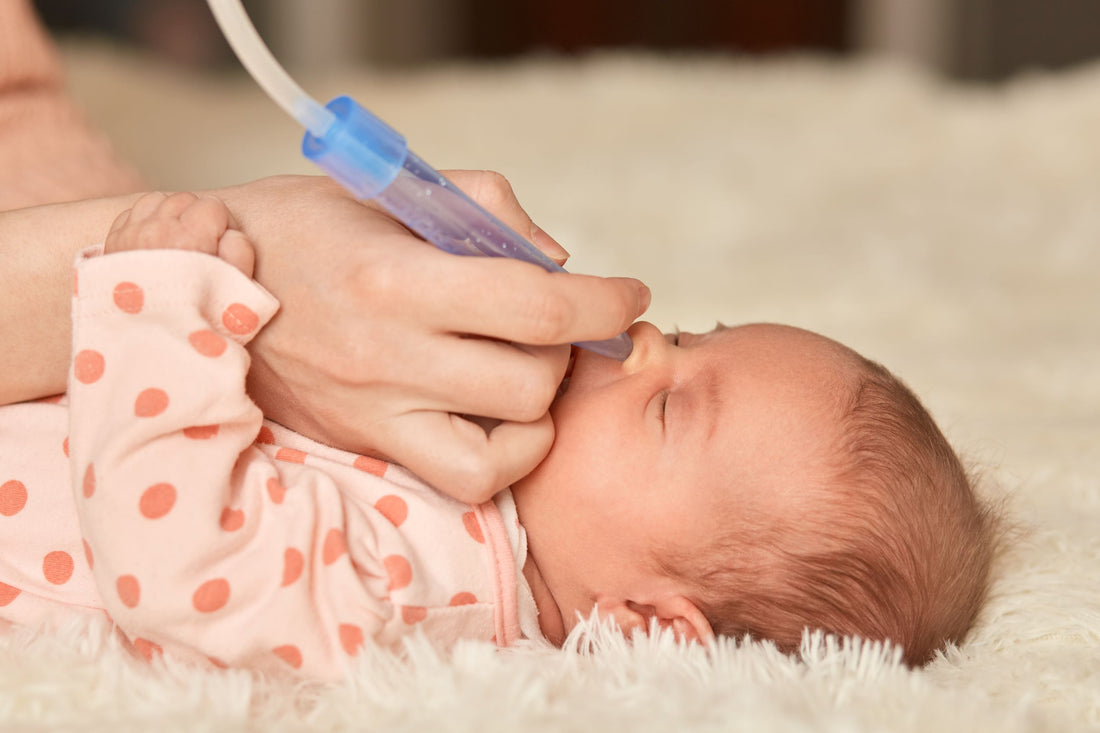
Help Your Snotty Baby with These Anti-Congestion Tips
It’s winter in Australia, and new parents know exactly what this means: snotty babies. If you are like thousands of other parents in the country, you know just how tiring and saddening it can be to see your baby struggling to breathe comfortably. Perhaps it makes you feel guilty as well as your tiny one struggles to sleep, or even eat. Congestion is no fun for any person involved, and it can get worse with the cold months as the air becomes dryer and the moisture is hard to come by. That being said, congestion also leads to the buildup of extra fluid in the nose and airways, something that makes your baby uncomfortable due to the very small lungs and airways they have. This is why your baby needs some extra help. Although mild congestion may not be very concerning, it can definitely make your little one’s life a lot more tiring and a lot less comfortable. Let’s have a look at a few ways you can help your baby breathe better and be less congested.
Sources of congestion in newborns
First, be aware that there are various sources of congestion in newborns. If your baby is coughing, wheezing or grunting, you may want to pay attention to chest congestion which could mean a trip to the doctor is necessary if things don’t get better within a few days. This may be because your baby suffers from asthma, pneumonia, bronchiolitis, the flu, or because he or she was born prematurely. On the other hand, nasal congestion is usually not as serious and can be accompanied by thick nasal mucus, discoloration, snoring or breathing noisily when he or she is asleep, sniffling, or having difficulty eating because the breathing is impaired. If this happens, you have a few ways to treat it as home.
Hydration
For example, one of the best ways to beat mucus buildup is to make sure your baby is well-hydrated. When mucus builds up, sometimes, it can be because of the cold air which we find all throughout winter. Making sure that your baby is drinking enough milk will help with this. If you have a toddler and have stopped breastfeeding, make sure that he or she is drinking enough water. This also includes offering enough and making sure that he or she is sleeping enough as sleep can ensure that your baby can rejuvenate and rest up well enough for the body to fight the virus or bacteria that are causing the sickness.
Using other types of water can also help. For example, running your baby a warm bath can help decongest him or her while also providing a distraction from feeling so exhausted and sick. Include some playtime with him or her to make it much more fun and engaging. Using a humidifier can also be very helpful as it will provide more moisture throughout the room. Using the cool mist can help your baby breathe much better which can also help him or her sleep. A pro-tip if you do not have a humidifier is just to sit with your baby in the bathroom while the shower runs hot– this will create enough steam to help decongest him or her just enough to have a good night’s sleep.
Nasal saline drops
But even if you do all this, you may still see your baby struggle to breathe. In such cases, a trick that helps a lot is using nasal saline drops. Also called a nasal lavage, it can help in the short-term to provide some relief and to help your baby feel a lot less congested. If you need a quick solution that opens up the airways enough to let your baby have a good night’s sleep, nasal saline drops can do the trick. However, they don’t heal– they only open up the nose and can make it easier to breathe.
Baby massages
Using massages can help your little one as well. By rubbing the bridge of the nose, the eyebrows, and the sinuses gently, you can help your baby’s sinuses move the mucus down the nose cavity so you can take the mucus out more easily. Be gentle, however. You can also improve your home’s air quality by using filters and replacing those as often as necessary. Do not smoke around your child and use unscented candles only to avoid spreading more irritanty throughout your home. Using medication or vapor rub is not recommended as most of these are too strong for your baby to handle.
Nasal Aspirators
A very simple and effective tool to free your baby from congestion within minutes, are Nasal Aspirators. There are different types of Nasal Aspirators (please refer to this link for the 6 top sellers in Australia)
Manual Nasal aspirators are generally gentler on your baby’s nose as you can adjust the suction. One of the leading Manual Nasal Aspirators is the Bliss Baby Nosy Nasal Aspirator. Nosy collects the mucus in a washable reservoir and is equipped with a filter. This not only traps the mucus but also the germs. Like most Nasal Aspirators, BlissBaby Nosy does not contain any BPA, phthalates, or other chemicals which can harm your baby and it is approved by the TGA which is part of the Australian Department of Health.
What’s more? Nosy is easy to wash, dishwasher-friendly, comes assembled and ready to use, and has been voted as one of the 6 Best Nasal Aspirators in Australia.
With this in mind, you should still make sure to consult a physician if the congestion of your baby does not go away after a few days. Similarly, if he or she is not wetting enough diapers, your baby may be dehydrated or underfed which is a source of concern and should be taken care of promptly.
